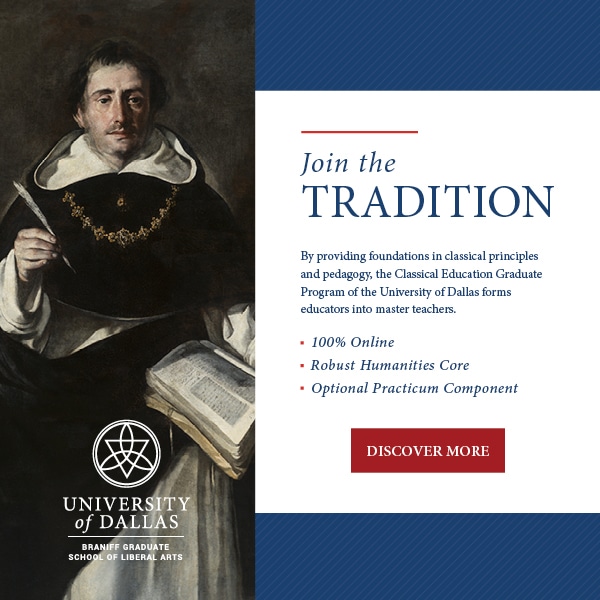The Fertility Dilemma for Female Faculty

“Don’t get married!” This jarring imperative sentence was delivered in a half-jest during a faculty development week by the pastor of a parochial classical school I was contracted with during my six-year teaching career. As a mid-twenty-something at the time, I very much hoped, like many highly educated women, to find a life-long mate. I also practice Roman Catholicism, a religion which asserts “the vocation to marriage is written in the very nature of man and woman as they came from the hand of the Creator” (CCC 1603). So, hearing a priest utter this was rather stunning… and yet I did understand deep down what he was driving at: marriage and teaching are difficult to combine for women who desire to be mothers. And yet, this topic is seldom directly addressed.
Why is teaching often incompatible with women’s maternal aspirations? Perhaps many, even in education circles that are pro-family, are simply ignorant of female fertility: the oft- beleaguered “biological clock” remains a visceral reality. All of our scientific progress is not able to erase the clear evidence that women who desire children ideally ought to bear them in their twenties as it poses the least risk for complications. In fact, women are considered to be of “advanced maternal age” when carrying a child at ages 35 and older. While the U.S. government acknowledges women’s reproductive years to extend up to age 49, the stark truth is that fertility for females rapidly declines in their mid-thirties, making pregnancy (by natural efforts) highly unlikely by age 45.
Even if a woman is in her fertile years, a number of factors can make achieving a much-desired pregnancy difficult. Under the best circumstances, one study found women face their highest likelihood of conceiving at a mere 25.5% three days prior to the rise of their resting BBT (basal body temperature), which is a sign that ovulation has occurred. A number of factors will delay ovulation, but most can conveniently be bundled under the term stress. And teachers never experience this, right? Whether it’s illness, poor nutrition, sleep deprivation, feeling over-worked/burnt-out, or even excessive noise pollution, the body treats all of these as stressors and will work to protect itself from additional ones, such as the energy toll carrying a baby would exact from a woman. Stress will lower a woman’s libido, which may not only cause marital discord but discourage her from entering into the sexual embrace altogether. Sinisterly, women are also at risk for miscarriage if chronic psychological stress is present before and during early pregnancy.
Anecdotally, I witnessed firsthand the announcement of four pregnancies by former colleagues during one memorable academic year. Two carried their babies to term (both were younger women), while the other two sadly lost their children to miscarriage (both women were older; both were experiencing chronic stress). While I would never blame the women or shame the school administration, I do find it astonishing that classical schools in particular, with their emphasis on ordo amoris (ordering the affections), are neglecting the well-being of mothers and offspring for lesser goods. The gift of life is a higher good than the gift of education, albeit a classical one. And if we eschew maternity, schools won’t even have any children to teach.
Many female teachers in elementary and secondary education have to weigh various factors upon marriage. Will we have a child right away? How fertile am I now given my age and circumstances? Should I continue teaching, and if so, how long? Will I teach after giving birth? Who will care for my young child while I’m away at school? Will I nurse my child, and if so, how will my child be fed while I’m away?
I’ve taught in a school where a colleague brought her toddler to work with her every day; the little girl simply participated to the degree she was able to in what the older children were doing, or otherwise was able to occupy herself while her mother was nearby. I’ve witnessed a talented music teacher utilize a three-month maternity leave (the school hired a long-term substitute) and then come back to work her part-time schedule. I’m certain offering online courses by an individual, especially if they have consistent childcare assistance, works well for mothers who still want to dip a toe in the teaching realm.
But more often than not, modern school schedules are not conducive for women teachers who want to be present to their young children. Because numerous schools, including classical ones, follow a traditional calendar, there is more rigidity to the academic year’s organization and expectations for the teachers’ presence. It’s difficult for a school with a teacher who has a February due date to accommodate her working until the baby is born and then hire a temporary substitute or a new teacher entirely to replace her in the middle of the third quarter. And if she is suffering from morning sickness or other health struggles that take time away from the classroom, the plain and simple fact is that such a scenario is disruptive. If she uses all her sick and personal days, then she may suffer a loss of income. And to many progressives’ chagrin, there is strong evidence that the quantity of time (or lack thereof) a mother (not a father, not another caregiver) spends with her child during his or her first three years of life will affect that child’s development. Erika Komisar, LCSW, author of the book Being There: While Prioritizing Motherhood in the First Three Year Years Matters, speaks about the harm of popping in and out during the day, which confuses infants and toddlers who quite literally believe their mothers are gone forever when they are out of sight. So crafting a school with on-site daycare for female teachers’ young children actually wouldn’t be beneficial for the little ones if they had to witness their mother leave them to return to their work several times after breaks.
In conclusion, we need to be transparent about the realities of biology and mothering that women teachers face. For starters, we should be more honest with adolescent girls about their fertility so that they have this critical information as they discern a realistic timeline for selecting a husband while getting the education and career mentoring they desire. Women need to realize that they can achieve all the things they want in life (e.g., being a talented teacher and devoted mother) but may have to do so during different seasons. Schools and administrators need to decide what values are important to them: keeping a traditional schedule, which may mean higher turnover for young female teachers once they marry and have children, or attracting a community of educators with a history of longevity, which may mean hiring older adults, people living out a consecrated celibate life, or reimagining how we structure school altogether so that it is more conducive to the realities of becoming a mother. Let’s not allow our alma maters to inhibit motherhood.
Claudia Kapusinski
Claudia (née Kapusinski) Holzmann, M.A., taught composition and humanities for six years at several classical schools before marrying her beloved husband, Michael, in the summer of 2024. Although she has stepped away from the classroom during this new season of life, she continues to read the classics with The Loom in Albuquerque, NM, while anticipating helping her future offspring become wise and virtuous.











